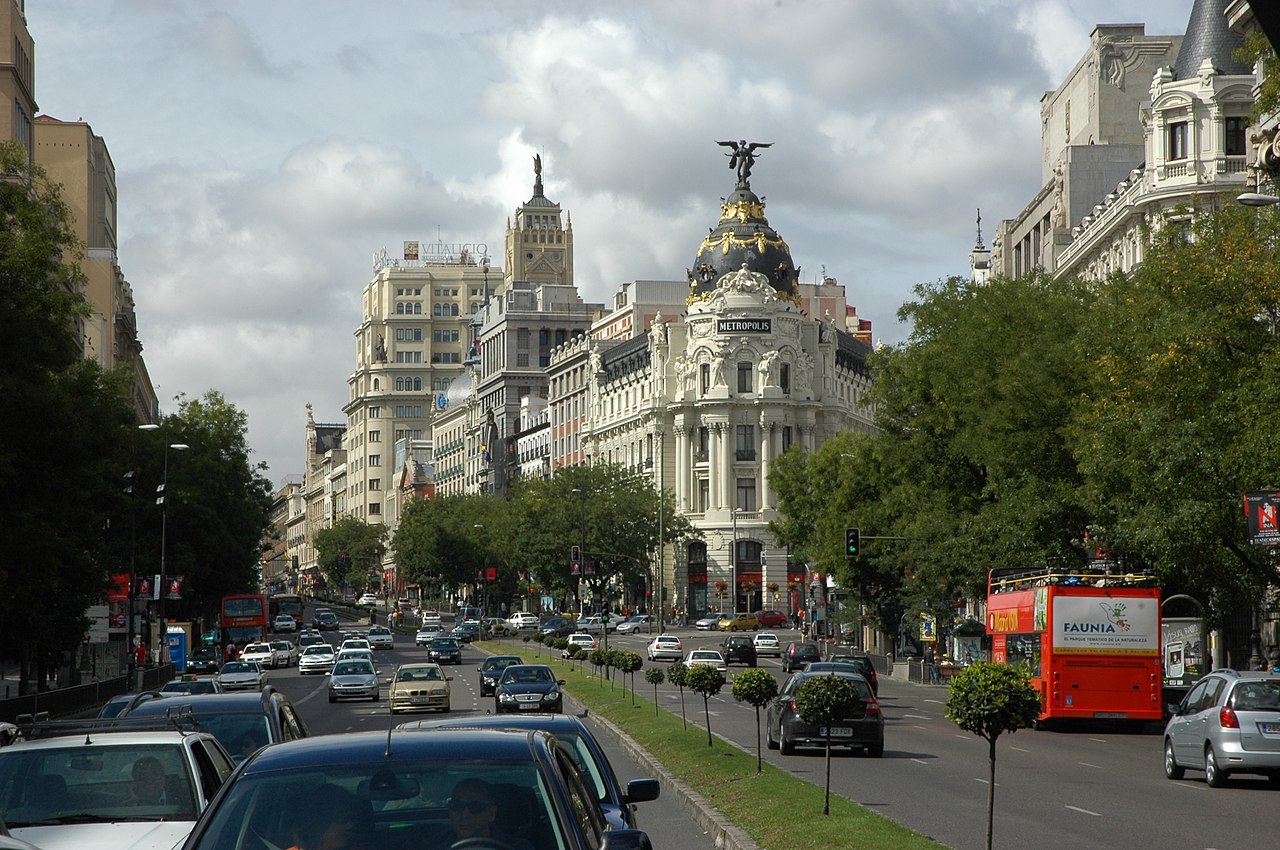
Throughout history, there have been multiple curiosities of Alcalá street in Madrid. Not surprisingly, it is one of the oldest in the city, although it did not always have its current name. It seems that he was first baptized as Olive Street because it went through one. Also, the section that goes from the current Arturo Soria and Eisenhower knot was called for a time aragon avenue. And the one that runs from the Paseo del Prado to the Puerta de Alcalá (which we will talk about later) was known as Calle del Pósito because that is where the Royal Deposit of the Villa of Madrid, warehouse for the wheat that arrived in the city.
Its origins are unclear. But it seems that born in the fifteenth century when new buildings made it necessary to prolong the main Street until precisely the Aragon road. It was also the route leading to Alcalá de Henares, from which it would later take its name. But, without further ado, we are going to tell you curiosities about Calle Alcalá de Madrid.
The longest in the city
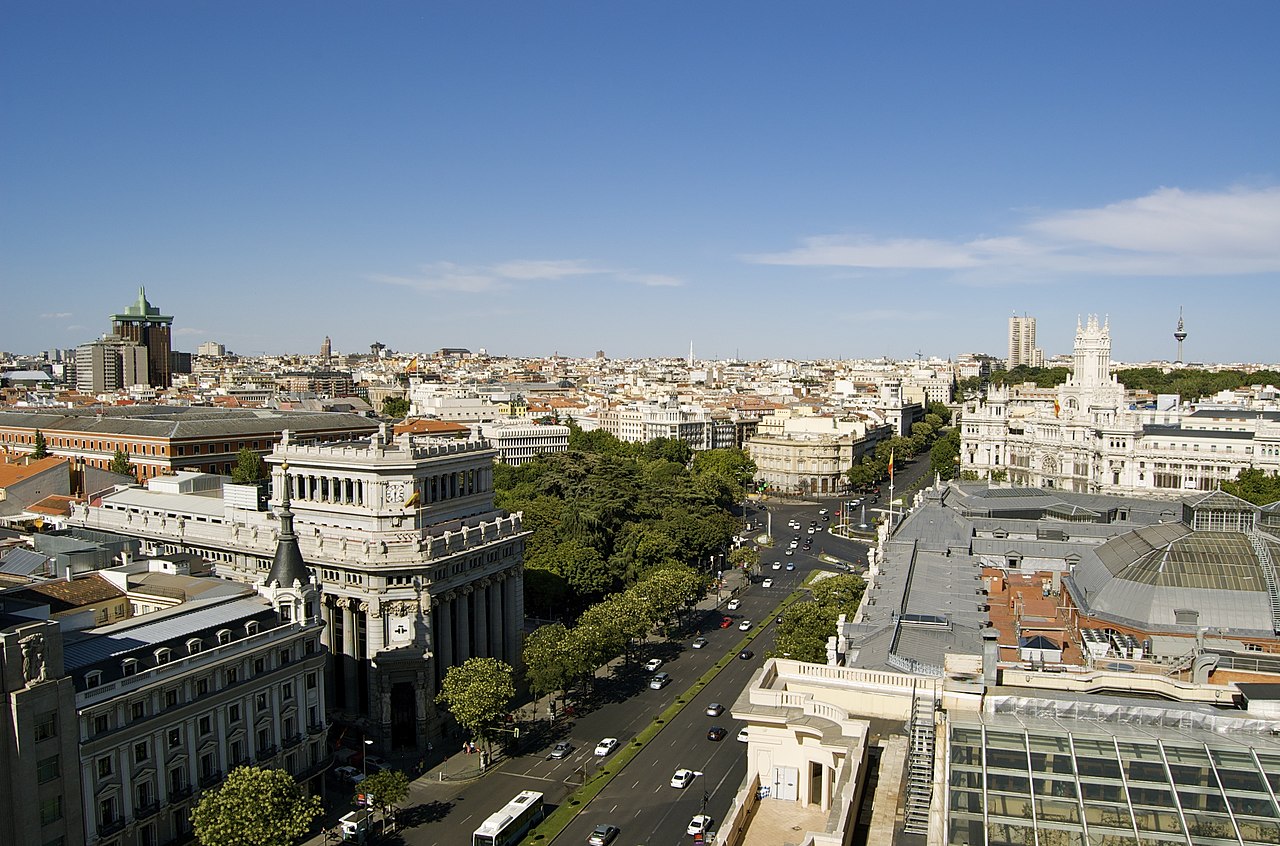
View of Alcalá street from the roof of the Círculo de Bellas Artes
Calle de Alcalá is not only one of the oldest in Madrid, but also the longest in the city. It is about eleven kilometers long and extends from the Puerta del Sol to the district of San Blas-Canillejas. It was growing at the same pace as the capital and, thus, a first section reaches the emblematic Plaza de Cibeles. But then continue east to reach the access road to the o'donnell station.
In total, it has almost six hundred numbers and it is also the third longest in Spain. It's just behind the Gran Vía of Les Corts Catalanes with about one thousand two hundred numbers and the Valencia street with almost seven hundred, both in the city of Barcelona.
It will also give you an idea of its extension the fact that crosses five districts of the capital. They are those of Centro, Retiro, Salamanca, Ciudad Lineal and San Blas-Canillejas. In turn, this translates into passing through neighborhoods as popular as Sol, Cortes, Justicia, Recoletos, Goya, Ventas or Quintana/Pueblo Nuevo.
old royal glen
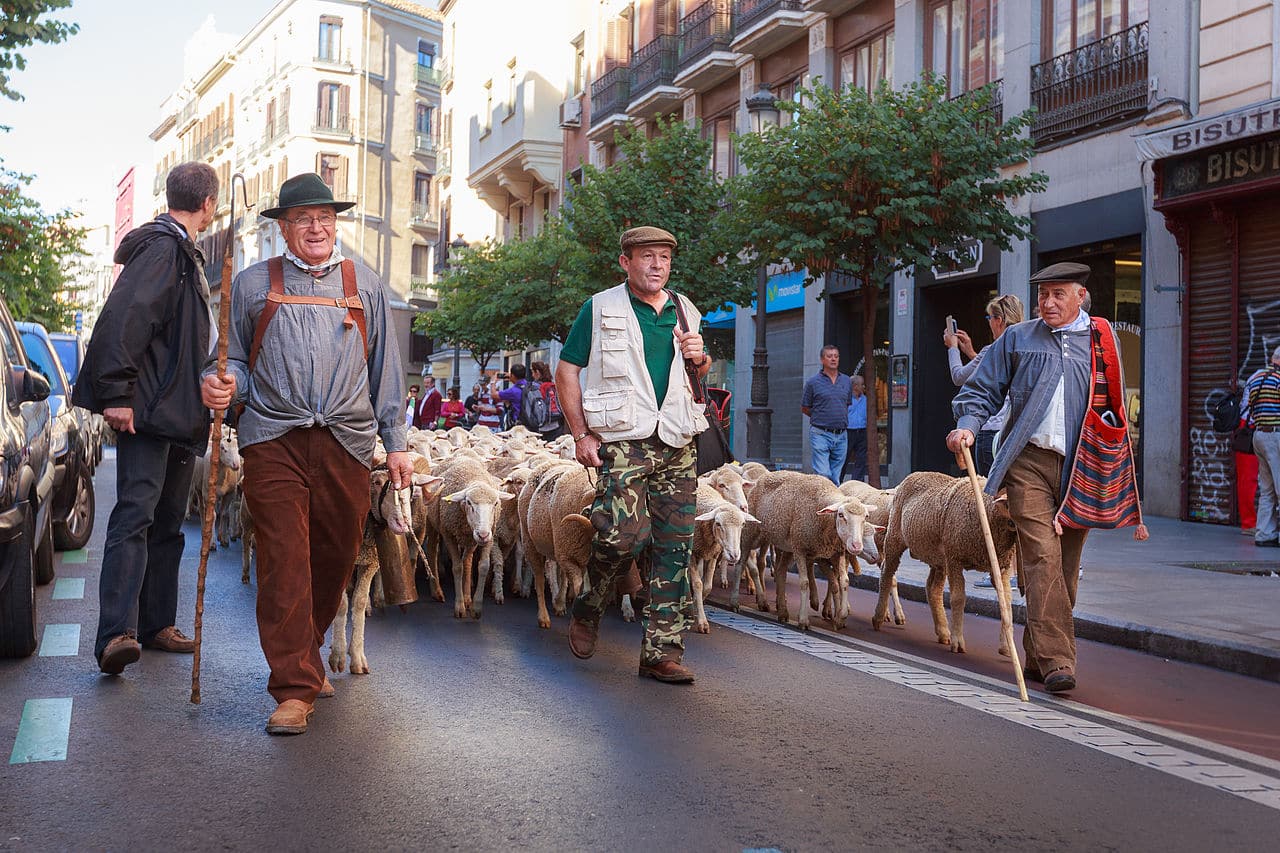
Transhumance Festival in Madrid: the sheep as they pass through Calle Mayor
But, among the curiosities of Calle Alcalá in Madrid, you will be more surprised by the fact that, in the past, a royal ravine passed through it. As you know, this name was given to the routes through which the cattle traveled in their transhumance movements. They were legalized by Alfonso X the Wise and controlled by the Council of the Mesta. In fact, once a year, the transhumance festival and we can see the flocks of sheep passing by the Puerta de Alcalá to the surprise of tourists.
On the other hand, as we have told you, in its beginnings it was called Olive Street for what was in it. Regarding this, we will tell you an anecdote: they were cut by order of Isabel the Catholic because they served as a hiding place for criminals. In turn, this meant that it lost its original name.
center of financial power
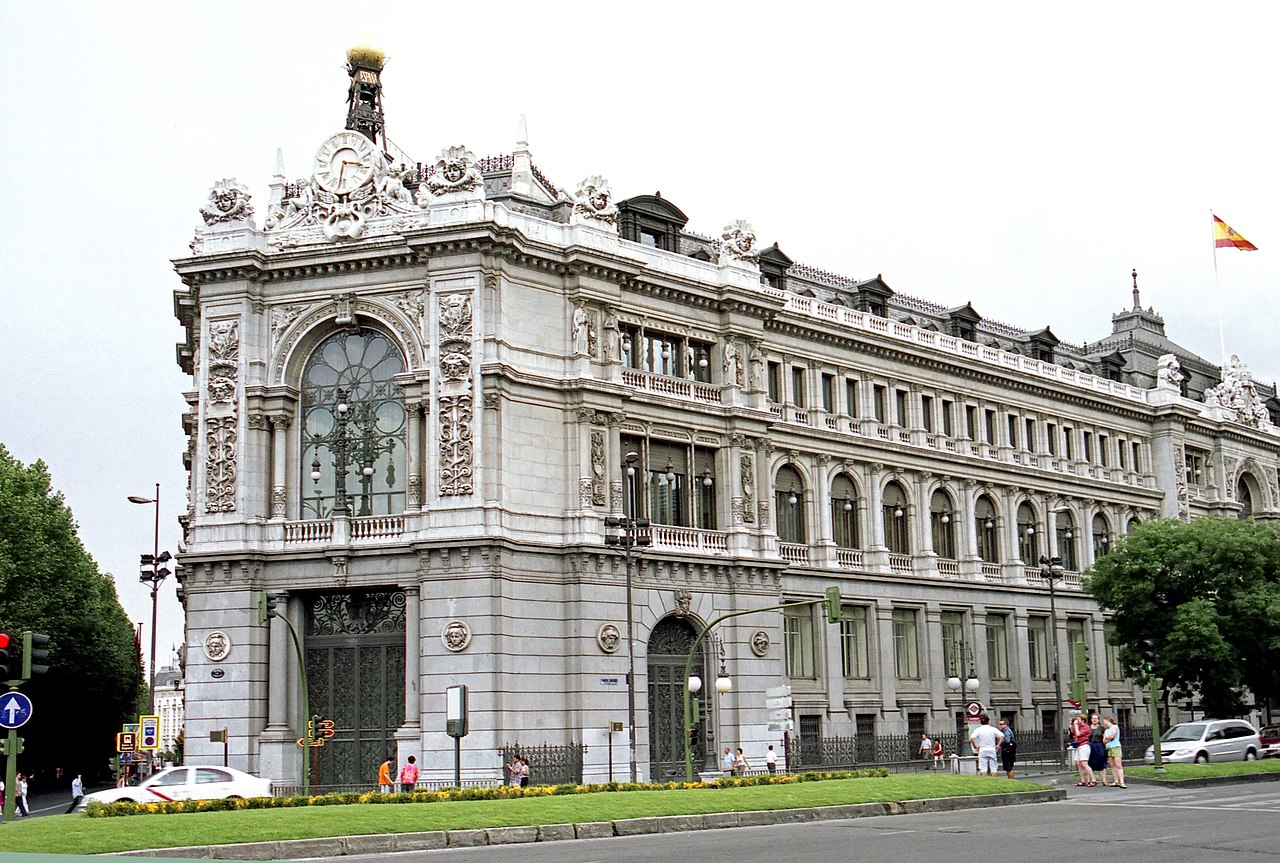
Bank of Spain building in Alcalá street
But Alcalá Street was not only known for being the path of transhumance. For a time, it was also called "bankers street" due to the number of entities of this type that had their headquarters in it. In fact, the Bank of Spain it is still there.
Perhaps this was also due to the proximity to the Neighborhood of salamanca, where many of the big names in banking had their mansions. Currently, most of these companies have moved to the outskirts, so Calle Alcalá is no longer the center of financial power in Spain.
The tragedy of the Alcalá 20 nightclub
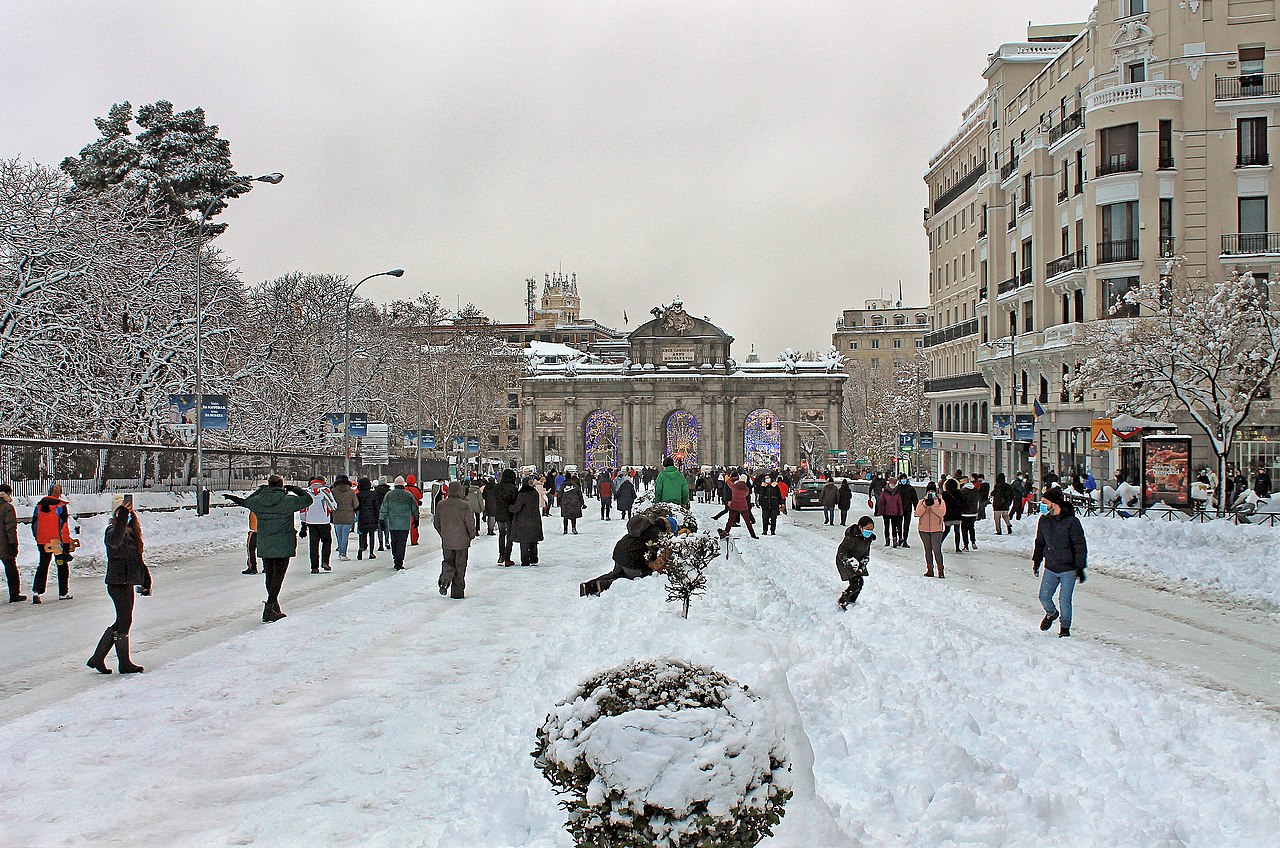
Snowy Alcalá street with its famous door in the background
Alcalá street has also experienced great tragedies. Perhaps the most serious took place on December 17, 1983. A spark caused by a short circuit set fire to the Alcalá 20 nightclub, which was under the Alcazar Theater. Back then, the current security and evacuation measures did not exist and the decoration was highly flammable. 81 people died.
Sadly, there were only a few minutes left before closing. However, that tragedy marked a before and after in the fire legislation for nightclubs. Today, it is much stricter than then.
One of the most monumental in Madrid
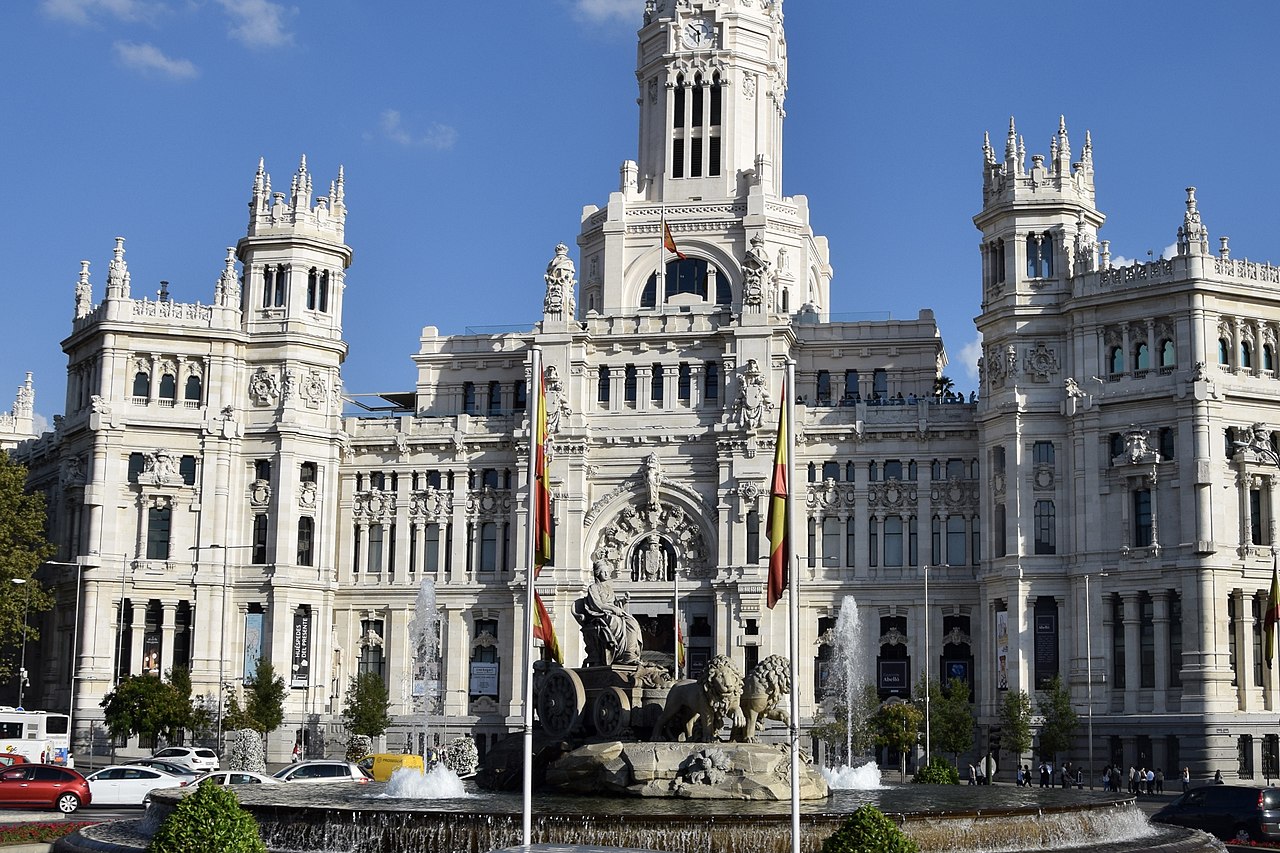
Palace of Telecommunications with the statue of Cibeles in the foreground
Returning to more friendly topics, another of the curiosities of Alcalá street in Madrid has to do with the large number of monuments it houses. This is influenced by its long extension, but also by the fact that many nineteenth-century aristocrats built their houses on it. We will make a separate mention of its famous door, but now we are going to review some of those other constructions.
It would be impossible for us to tell you about all of them. But, if you walk down the street, you have to pay attention to the metropolis building. You will find it on the corner of Alcalá with Gran Vía. It was designed by the Gauls Jules and Raymond Febrier at the beginning of the XNUMXth century and responds to the eclectic style inspired, precisely, French. Therefore, it combines different elements, some neo-baroque, others modernist. But one of the most outstanding is its spectacular dome, which mixes slate with golden touches of gold leaf.
In the same eclectic style, although with a preponderance of neoplateresque, responds the Palace of Telecommunications, which is in front of the Cybele statue. It was also built at the beginning of the XNUMXth century with designs by the architects Joaquin Otamendi y Antonio Palacios. As its name suggests, it was originally the headquarters of the Post Office and Telegraph Office, but it currently houses Madrid City Council offices and a cultural centre.
In Plaza de Cibeles itself, on the corner of Paseo de Recoletos and Calle Alcalá, is the Palace of the Marquis of Linares, built in the last third of the XNUMXth century. In his case, the architect was also French: Adolf Ombrecht, to whom other mansions in the area were owed. Currently, it houses the House of America. Next to this, you have other beautiful palaces on the street like Goyeneche's, built in the XNUMXth century by the churriguera brothers: the one from Buenavista, which today is the headquarters of the Army.
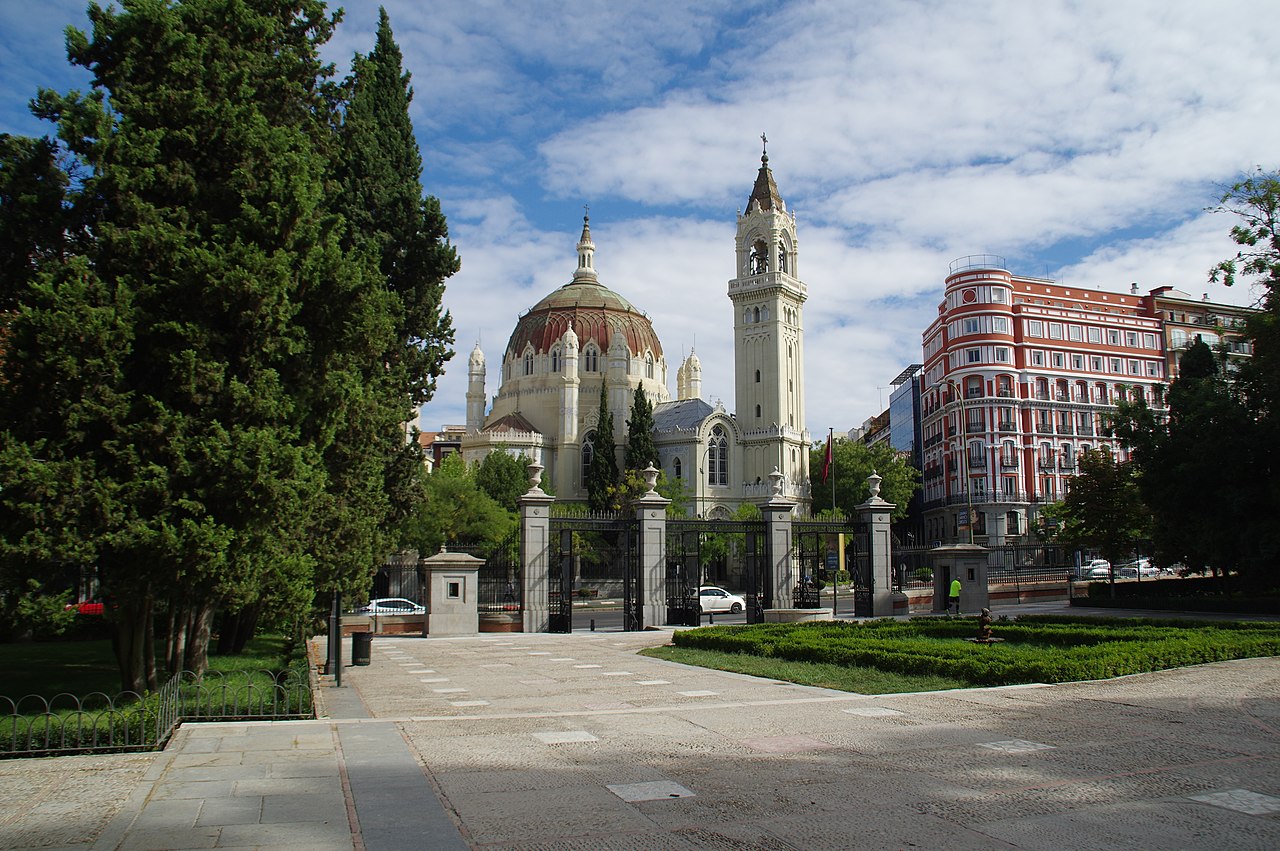
The spectacular church of San Manuel and San Benito
When telling you curiosities about Calle Alcalá in Madrid, we told you that it was known as Calle de los Banqueros. Right there is the Bank of Spain, whose headquarters is a beautiful palace also built at the end of the XNUMXth century. But, in addition, in this popular street you have the Central, Urquijo and Bilbao bank buildings.
But you also have religious buildings in Alcalá. Among them stands out the Church of the Calatravas, a jewel of the Spanish Baroque. It is a sober construction apparently due to Friar Lawrence of Saint Nicholas. However, the exterior design that you can see today is due to a XNUMXth century reform by the romantic architect John Madrazo. In addition, the original external simplicity contrasts with the decorative exuberance of its interior. The impressive main altarpiece, in gilt and polychrome wood, was the work of Jose de Churriguera.
For its part, the church of San José It was built in the XNUMXth century with a design of Pedro de Ribera. Likewise, it responds to the baroque style, but much more ornamental than in the case of the Calatravas. And its interior is also impressive, in which there are many sculptural jewels such as the Cristo del Desamparo, from Alonzo de Mena. Finally, we will talk about the Church of San Manuel and San Benito, which you will find on Calle de Alcalá in front of Parque del Retiro. Designed by Fernando Arbos and inaugurated in 1910, it is a marvel of Neo-Byzantine style. For this reason, its enormous dome stands out, but also its slender tower in the manner of the bell towers Italians.
Alcala Gate
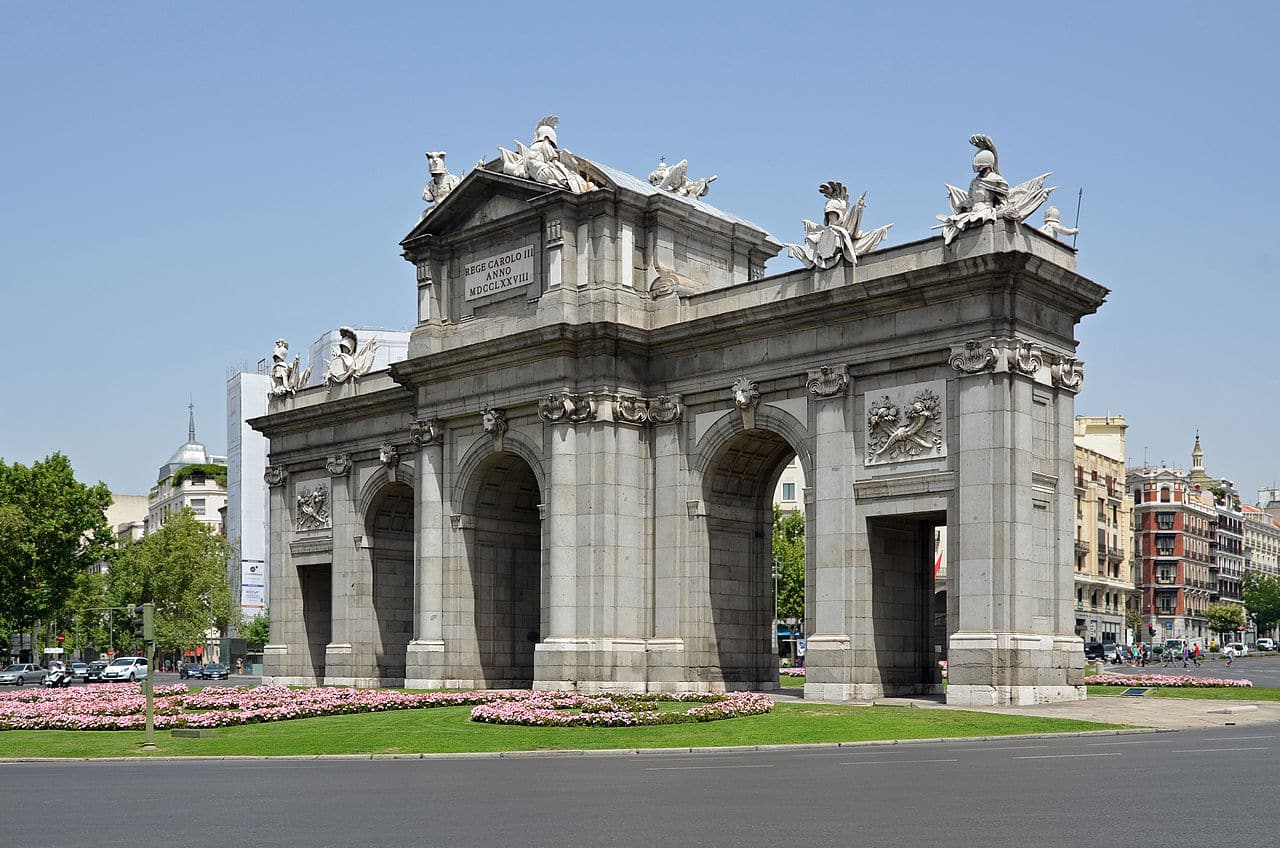
The emblematic Puerta de Alcalá
We have left for last what is perhaps the best-known monument on Calle Alcalá. We are talking about the popular door to which a famous song was even dedicated. It was built by order of Carlos III to replace the one he saw when he arrived in Madrid to take over the crown. Among the various designs that were presented, the winner was the one made by Francesco Sabati, trusted architect of the already monarch.
Built in the manner of the Roman triumphal arches, it is neoclassical and served as a gateway for travelers arriving from Aragon. But, logically, today it is in the center of Madrid and has become one of its most emblematic monuments. Since 1976 it is artistic historical monument.
It consists of three bodies, of which the central one is higher. Five openings are distributed in them. The three central ones are semicircular arches with keystones in the shape of a lion's head, while the two lateral ones are flat arches. For its part, the capitals of its columns respond to the Doric order and end in a cornice inspired by the one he made Miguel Angel for the Capitol of Rome. As for the decoration, it was the work of Francisco Gutierrez y Robert Michael. The allegorical figures of the four Cardinal Virtues and the shields on the west side stand out.
In conclusion, we have told you some curiosities of Alcalá street in Madrid. Given its age, it has many, but above all a large number of monuments which one is prettier? If you go to the capital, be sure to visit this authentic emblem of Madrid Full of history and anecdotes.